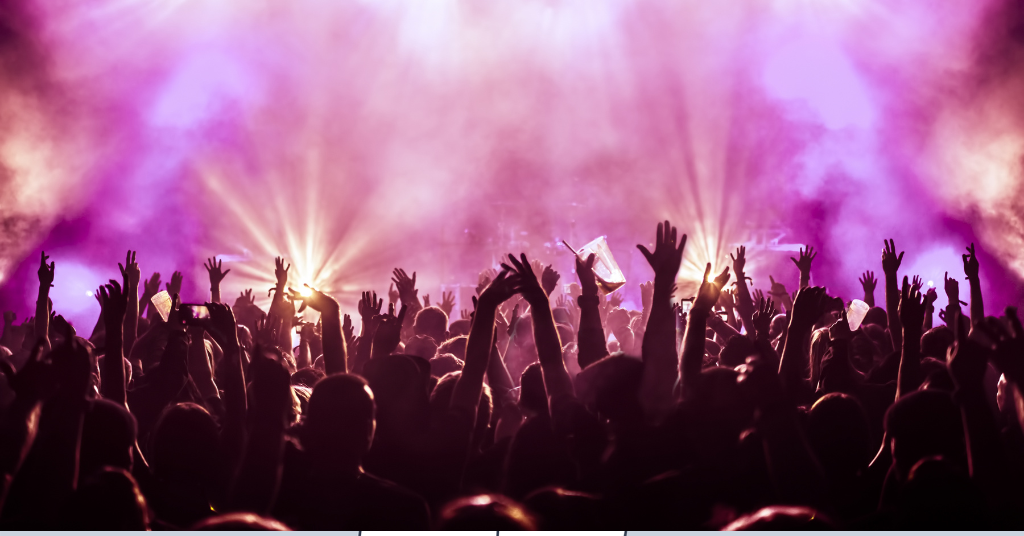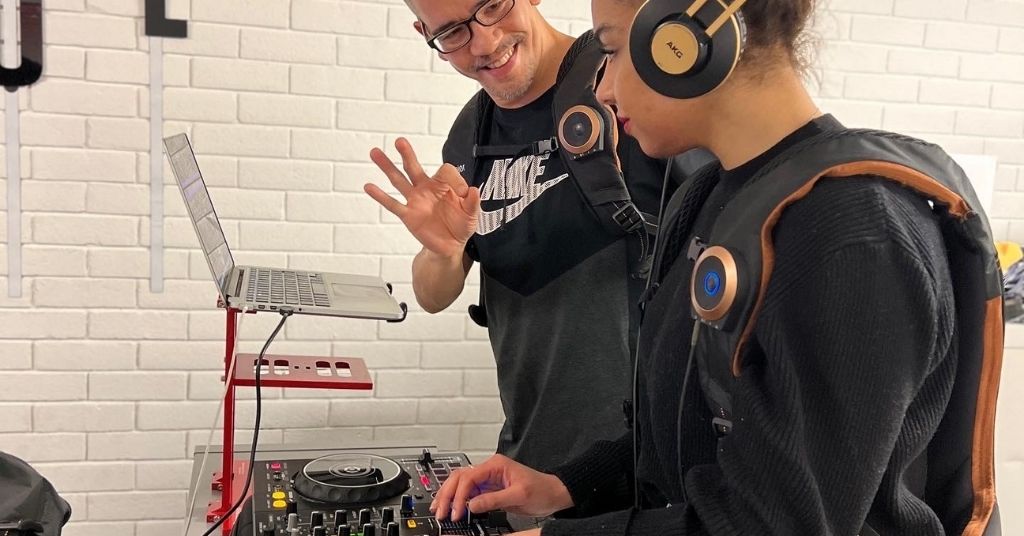
Chella man: This is what deaf looks like
June 10, 2019
Why our deaf daughter is learning both spoken English and ASL
June 12, 2019Woman signs entire Take That concert for deaf friend

Ellie Parfitt loves going to concerts, but as someone with hearing loss, she always is a little apprehensive about attending.
Will she be close enough to the stage so she can lipread, she wonders? Will she annoy her friends and family by always asking what song is playing? Is she even going to be able to enjoy the music?
“I love going to concerts if I can access them,” Parfitt says. “I saw Olly Murs a few years ago but it was only because I was right at the front I could lipread him and know what songs were playing.”
Other times, she says, it’s hard for her to enjoy the music.
“I went to see Take That last year, but I found it hard to understand the songs,” she says. “I know the songs and lyrics, but I can’t hear what’s playing unless someone tells me, or it’s written on a screen in subtitles.”
Parfitt, also known as DeafieBlogger, says because of these challenges, she tends to avoid concerts, especially those in large arenas. But when tickets came on sale to see Take That again this year, she decided to take matters into her own hands.
Deaf accessibility at concerts
As a deaf activist, Parfitt knew there must be a better way to accommodate her needs. She has spent the last few years campaigning for more subtitled screenings at UK theatres to try to ensure people with hearing loss can watch the same movies as everyone else, and she wanted to find a way to make the concert more enjoyable as well.
While there’s not always an easy solution, Parfitt suggests always asking the venue for performance interpreters or captions.
“It’s a legal requirement to make shows accessible on request,” she says.
In this case, Parfitt says she asked her friend Emma-Jayne to help.
Signing music in Sign Supported English
Emma-Jane Hatcher met Parfitt at last year’s Signature Awards, where Parfitt won a Leadership Award and Hatcher’s school was nominated for being Deaf Aware.
Hatcher says she first learned sign language at school, which offered funding to help friends of Deaf students learn the language.
“I was good friends with two Deaf boys in my year,” she says “and I got offered a place on the Level 1 course for free. I really enjoyed it, but after I left school, I didn’t use it for years!”
When Parfitt asked Hatcher if she wanted to go to the Take That concert and sign the songs for her though, Hatcher jumped on the opportunity.
“Ellie asked me to sign the concert for her and I was thrilled,” she says. “I love signing songs. You can be super expressive and also have a little dance at the same time!”
“I love signing songs. You can be super expressive and also have a little dance at the same time!”
Hatcher says she used a combination of Sign Supported English and BSL to communicate the words of the song and keep up with the beat.
“It was incredible to watch her and the band to know instantly what song it was,” Parfitt says. “The feel, mood, signs, expression, pace, all expressed through the beauty of sign language.”
Parfitt says lots of people at the concert were in awe of Hatcher’s performance and congratulated her.
“I could see lots of people keep looking at me during the concert while I was signing, and wondered if they knew what I was doing,” Hatcher says. “They certainly realized when I was signing the speaking in between songs though. It had a really positive reaction!”
Making concerts more accessible
While the Take Take concert also had immersive subtitles throughout the concert and even partially signed one of their songs ‘Pray,’ there are still ways to make their shows even more enjoyable for people with hearing loss.
She suggests people reach out to venues, as well as advocating for changes.
If bands and musicians want to become more deaf-friendly, she suggests the following accommodations:
- Actively seek interpreters – Some big bands on social media had interpreters and they get all the attention and videos so it’s good publicity, she says. It also attracts deaf audiences and fans.
- Caption songs – Include immersive subtitles in graphics
- Special seating – allow deaf people to the front so they can lipread or hear better
- Publicize the accessibility – Tell people that you’re accessible! So many people with hearing loss don’t know that the can find accommodation.
- Publicize the setlist – Knowing the set list allows people with hearing loss to be able to learn the songs on their own and know what’s coming up during the show.
“I don’t know how I’d have coped without Emma,” Parfitt says. “I felt included I could sing and dance along with everyone and know what they were singing, there’s no feeling like it!”
Read more from DeafieBlogger on HearingLikeMe, or connect with her on Instagram.



